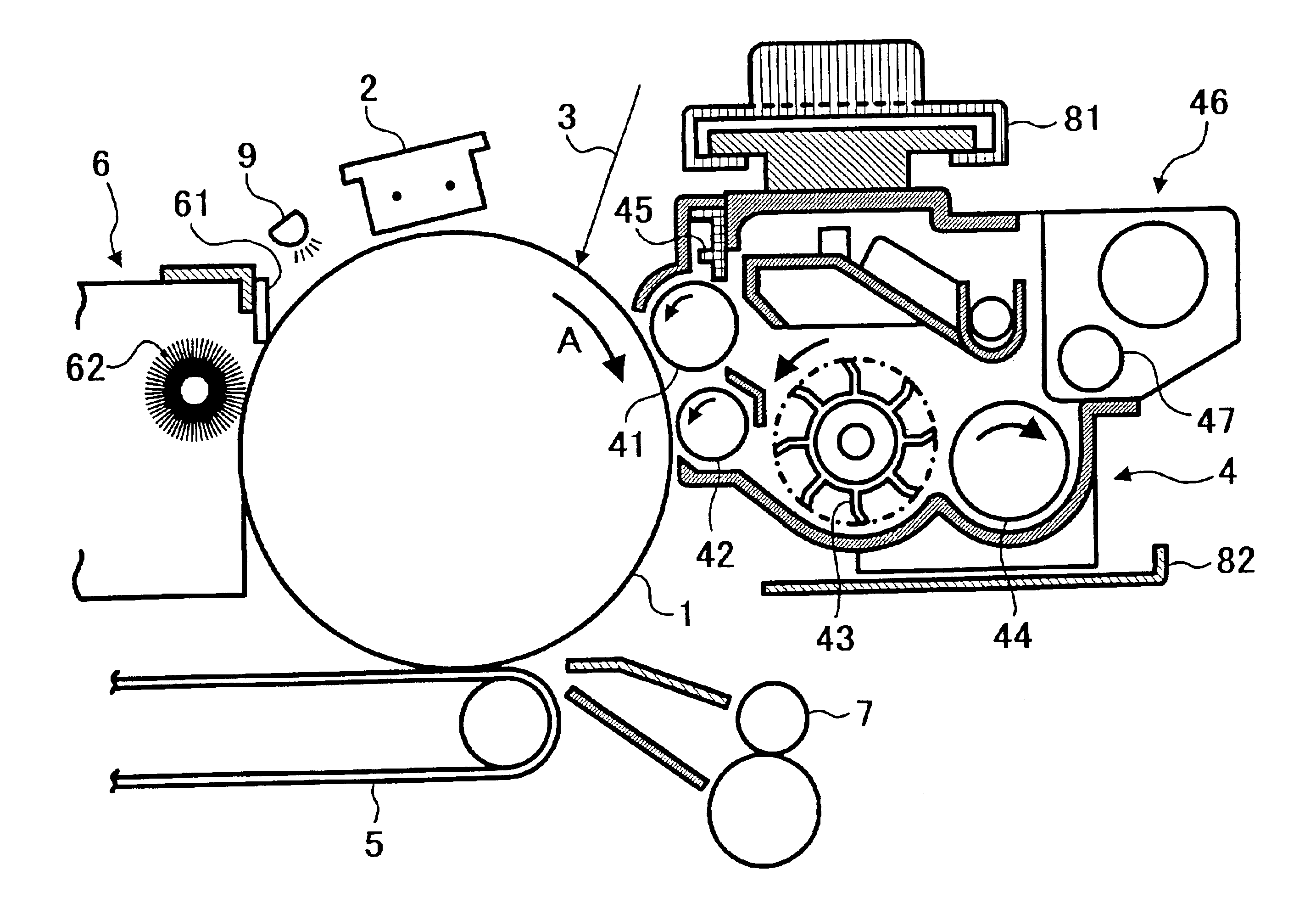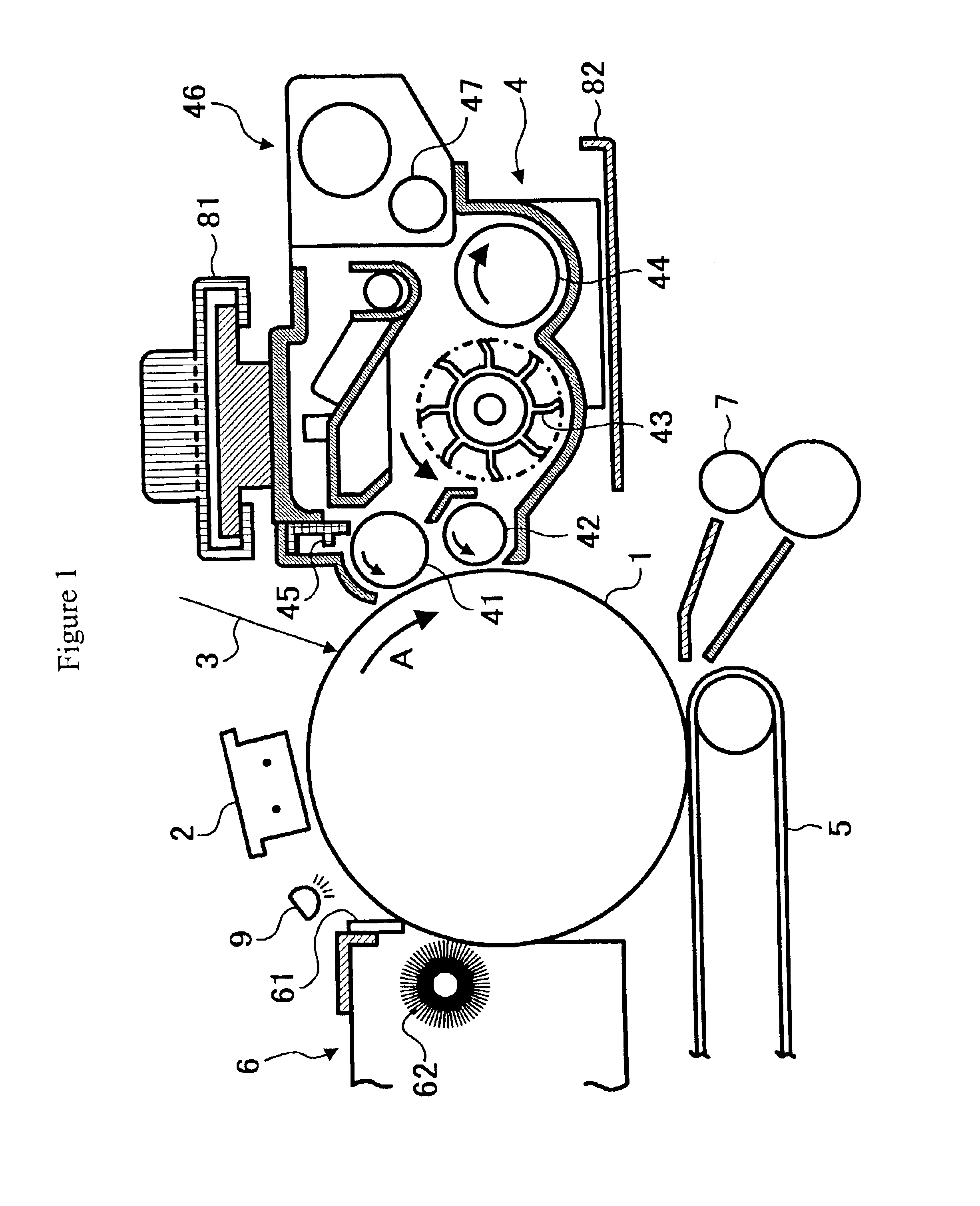Toner, method of forming the toner, and image forming method and apparatus using the toner
a technology of toner and forming method, which is applied in the field of toner, method of forming toner, and image forming method and apparatus using toner, which can solve the problems of less micro dot reproducibility, inability to stably clean toner particles having a small and uniform diameter with a cleaning blade, and inability to stably clean toner particles having a small and uniform diameter, etc., to achieve high quality, high reproducibility of micro dot image, and high reliability
- Summary
- Abstract
- Description
- Claims
- Application Information
AI Technical Summary
Benefits of technology
Problems solved by technology
Method used
Image
Examples
example 1
In a reaction container with a condenser, a stirrer and a nitrogen introducing tube, 690 parts of an adduct of bisphenol A with 2 moles of ethyleneoxide and 256 parts of terephthalic acid were mixed. The mixture was reacted for 8 hrs at 230° C. under a normal pressure. Then the reaction was further performed for 5 hrs under a reduced pressure of from 10 to 15 mmHg. After the reaction product was cooled to 160° C., 18 parts of phthalic anhydride were added thereto to further perform a reaction for 2 hrs to prepare an unmodified polyester (a).
Preparation for a Prepolymer
In a reaction container with a condenser, a stirrer and a nitrogen introducing tube, 800 parts of an adduct of bisphenol A with 2 moles of ethyleneoxide, 180 parts of isophthalic acid, 60 parts of terephthalic acid and 2 parts of dibutyltinoxide were mixed. The mixture was reacted for 8 hrs at 230° C. under a normal pressure. Then the reaction was further performed for 5 hrs under a reduced pressure of from 10 to 15 mm...
example 2
Preparation for a Prepolymer
In a reaction container with a condenser, a stirrer and a nitrogen introducing tube, 856 parts of an adduct of bisphenol A with 2 moles of ethyleneoxide, 200 parts of isophthalic acid, 20 parts of terephthalic acid and 4 parts of dibutyltinoxide were mixed. The mixture was reacted for 6 hrs at 250° C. under a normal pressure. Then the reaction was further performed for 5 hrs under a reduced pressure of from 50 to 100 mmHg. After the reaction product was cooled to 160° C., 18 parts of phthalic anhydride were added thereto to further perform a reaction for 2 hrs. Then, the reaction production was cooled to 80° C. and mixed with 170 parts of isophorondiisocyanate in ethyl acetate and reacted for 2 hrs to prepare a prepolymer including an isocyanate group (2).
Preparation for a Toner
In a beaker, 15.4 parts of the above-mentioned prepolymer (2), 50 parts of the polyester (a) and 95.2 parts of ethyl acetate were mixed and stirred to be dissolved. 20 parts of cam...
example 3
Preparation for a Prepolymer
In a reaction container with a condenser, a stirrer and a nitrogen introducing tube, 100 parts of an adduct of bisphenol A with 2 moles of ethyleneoxide, 130 parts of isophthalic acid and 2 parts of dibutyltinoxide were mixed. The mixture was reacted for 8 hrs at 230° C. under a normal pressure. Then, after the reaction was further performed for 5 hrs under a reduced pressure of from 10 to 15 mmHg, the reaction product was cooled to 160° C. to prepare a prepolymer including a hydroxyl group (3).
Preparation for a Dead Polymer
In a reaction container with a condenser, a stirrer and a nitrogen introducing tube, 589 parts of an adduct of bisphenol A with 2 moles of ethyleneoxide and 46 parts of dimethylterephthalate ester were mixed and the mixture was reacted for 6 hrs at 230° C. under a normal pressure. Then, the reaction was further performed for 5 hrs under a reduced pressure of from 10 to 15 mmHg to prepare a dead polymer (I).
Preparation for a Toner
In a b...
PUM
| Property | Measurement | Unit |
|---|---|---|
| Temperature | aaaaa | aaaaa |
| Fraction | aaaaa | aaaaa |
| Percent by mass | aaaaa | aaaaa |
Abstract
Description
Claims
Application Information
 Login to View More
Login to View More - R&D
- Intellectual Property
- Life Sciences
- Materials
- Tech Scout
- Unparalleled Data Quality
- Higher Quality Content
- 60% Fewer Hallucinations
Browse by: Latest US Patents, China's latest patents, Technical Efficacy Thesaurus, Application Domain, Technology Topic, Popular Technical Reports.
© 2025 PatSnap. All rights reserved.Legal|Privacy policy|Modern Slavery Act Transparency Statement|Sitemap|About US| Contact US: help@patsnap.com


